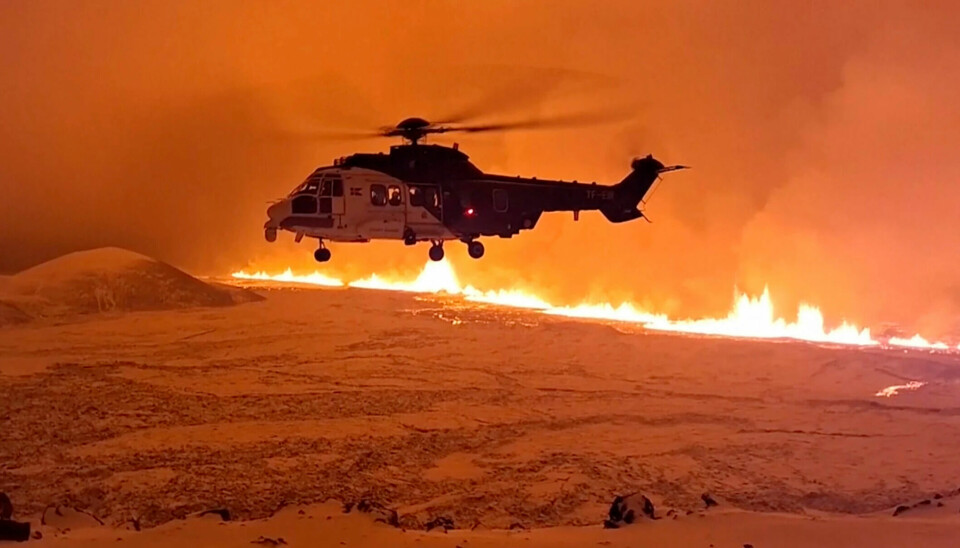
Volcanic eruption triggered by earthquakes in Iceland
There is a volcanic eruption on the Reykjanes Peninsula in Iceland following several earthquakes. The eruption comes after weeks of smaller tremors in the area.
Iceland’s national broadcaster Ruv reports that the eruption started in the Hagafell volcano northeast of Grindavik around 9pm on Monday evening. Both Ruv and local newspaper Morgunbladid have published pictures from live broadcasts of the area where you can see lava and flames.
According to Ruv, there were several earthquakes in the area before the eruption, the largest with a magnitude of 4.2. Icelandic authorities were on their way to the area with a helicopter on Monday evening to assess the location and size of the eruption.
Evacuated
Fearing a major eruption on Reykjanes, authorities have evacuated nearly 4,000 inhabitants of the fishing village Grindavik and closed the nearby tourist attraction The Blue Lagoon. The backdrop was magma movements under the Earth's crust that triggered hundreds of earthquakes.

Towards the end of November, however, the people of Grindavik were allowed to be at home from 9am to 4pm as long as the situation did not worsen.
Until 2021, the Reykjanes Peninsula had not experienced any eruptions for 800 years. Since then, there have been three eruptions. These eruptions have mostly been in uninhabited areas, but the current eruption is believed to pose a threat to Grindavik.
Morgunbladid writes that people have been asked to evacuate immediately.
Most active volcanic systems in Europe
Iceland has around 130 volcanic mountains and 33 active volcanic systems, the highest number in Europe. 18 of the volcanoes have had eruptions since the settlement of Iceland began in the 9th century.
In April 2010, an eruption in the Eyjafjallajökull volcano resulted in the disruption of air traffic across much of Europe.
Grindavik is located near the Keflavik Airport, but researchers have said that a new eruption will likely produce lava, not an ash cloud.
Most viewed
Grindavik avoids lava
The fishing village of Grindavik, which was evacuated before the volcanic eruption, appears for now to avoid being hit by lava, the Icelandic Meteorological Office reports.
The eruption started at 10.20pm local time on Monday evening. At that time, Kristin Jonsdottir, head of Icelandic Meteorological Office’s Volcanoes, Earthquakes & Deformation Deparment, said there was a risk that the lava could reach Grindavik.
However, early on Tuesday morning, following a meeting with Reykjavik’s civil defence, geophysicist Björn Oddson said that he now has potentially good news to share. This was reported by Icelandic broadcaster RUV.
“The eruption occurs north of the watershed, a place where lava flows either one way or the other. The lava is not flowing towards Grindavik,” he said after a helicopter inspection of the area.
“What we saw was a four-kilometre-long crack that aligns with the old crater series. This location would be the most favourable in case of an eruption,” he said.
Grindavik was already evacuated in November after hundreds of smaller earthquakes that were considered a precursor to the upcoming volcanic eruption. The eruption on Monday evening occurred just a few kilometres from Grindavik.
———
Translated by Alette Bjordal Gjellesvik
Read the Norwegian version of this article on forskning.no




































